Wollumbin National Park
Learn more
Learn more about why this park is special
Wollumbin National Park is a special place. Here are just some of the reasons why:
Sacred summit
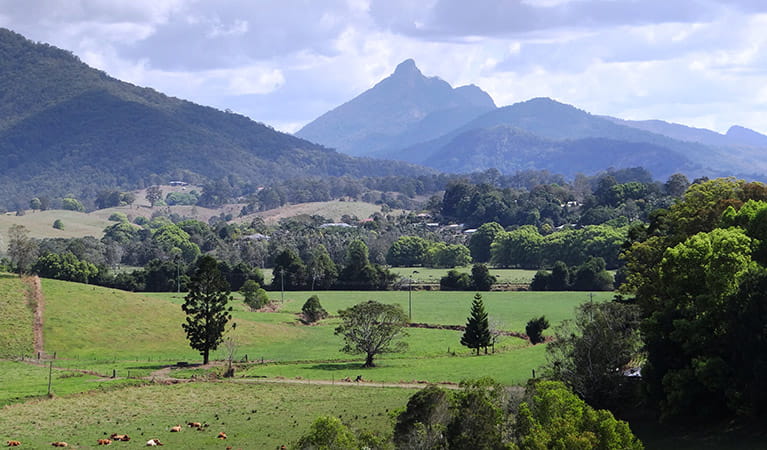
Captain Cook named it Mount Warning, but to the Aboriginal community it's a sacred place known as Wollumbin. The Wollumbin summit was declared an Aboriginal Place by the NSW Government in 2014, formally recognising the cultural connection of this place to Aboriginal people. Wollumbin is of great significance to many Aboriginal communities across Australia, particularly the Bundjalung and Githabul Nations. The Traditional Custodians and Aboriginal communities associated with Wollumbin continue to care for and manage Country, as well as their sacred spiritual sites and places.
- Wollumbin (Mount Warning) summit track Wollumbin (Mount Warning) summit track and Aboriginal Place remains closed. Decisions about the future of the summit track will be made by the NSW National Parks and Wildlife Service in accordance wit...
Green rooms of the world
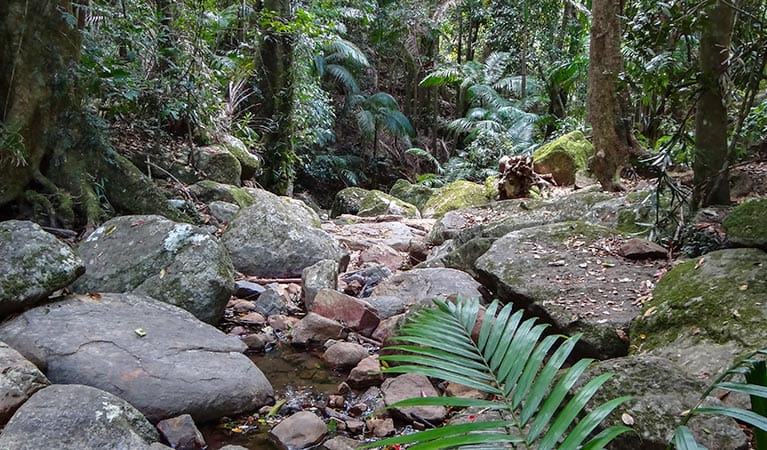
Wollumbin National Park is a Gondwana Rainforest of Australia. Gondwana rainforests include the world's most extensive areas of subtropical rainforest, large areas of warm temperate rainforest and Antarctic beech cool temperate rainforest. Luckily, you don't have to go far to experience some of these environments, which are practically in your backyard.
- Lyrebird track Lyrebird track is a short walk in Wollumbin National Park. It leads from Mount Warning Road across Breakfast Creek to a lookout surrounded by rainforest.
- Wollumbin (Mount Warning) summit track Wollumbin (Mount Warning) summit track and Aboriginal Place remains closed. Decisions about the future of the summit track will be made by the NSW National Parks and Wildlife Service in accordance wit...
Voices of the forest
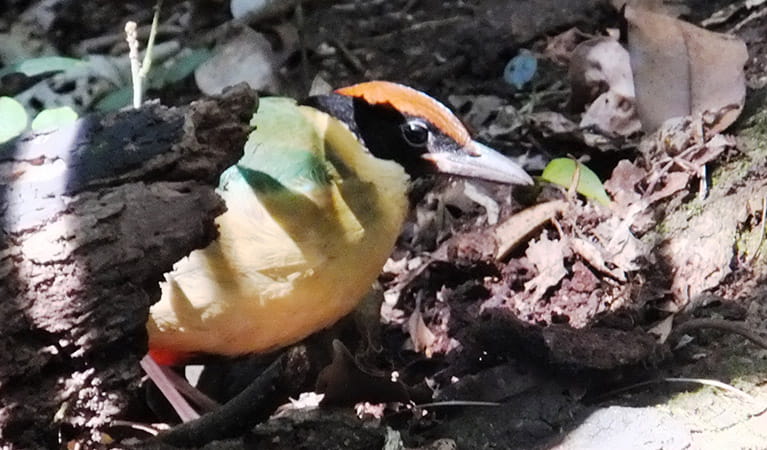
Can you hear the pouched frog? It’s a very quiet ‘eh-eh-eh-eh-eh-eh’. Did you know that the sound of the eastern whipbird is a duet? The first long note comes from the male and then the female joins in with her whip crack response. From the high canopy down to the forest floor live a huge variety of animals and birds to see and hear. Though some, like the carpet python, land mullet, eastern small-eyed snake, lace monitor, black-bellied marsh snake and long-nosed potoroo, are very quiet creatures. Plant species in Wollumbin seem varied to the extremes. There are prettily-named ones such as maidenhair, silkpod, watervine, wait-a-while, tree fern, wilkiea and red apple. These live alongside Wollumbin zieria, with its warty and felted branchlets, the prickly shield fern, stinging nettle, flooded gum, giant spear lily, dogwood, turpentine and, most disconcerting, giant stinging tree.
- Lyrebird track Lyrebird track is a short walk in Wollumbin National Park. It leads from Mount Warning Road across Breakfast Creek to a lookout surrounded by rainforest.
Plants and animals protected in this park
Animals
-
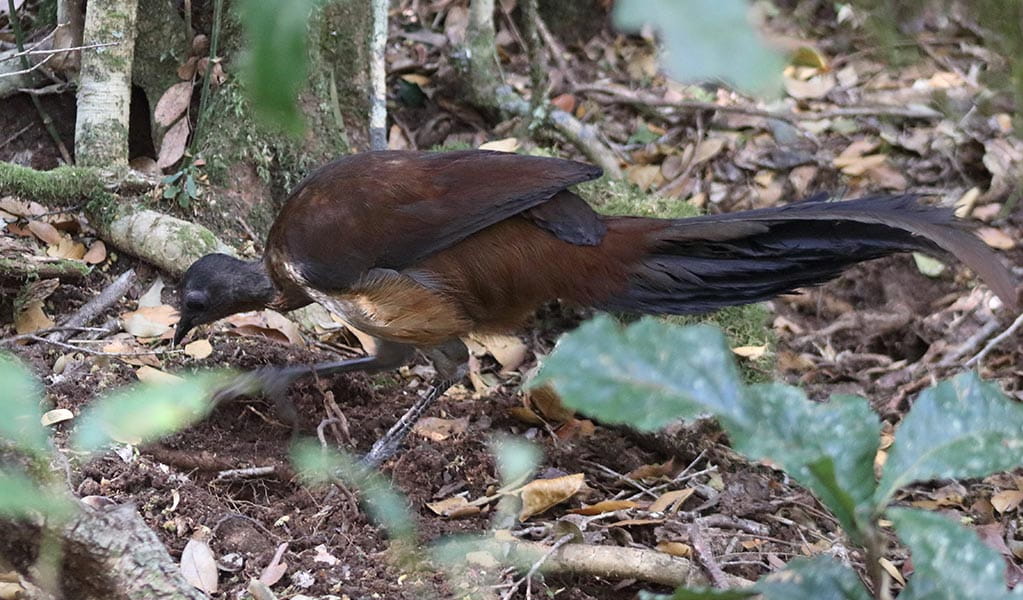
Albert's lyrebird (Menura alberti)
The Albert’s lyrebird is much rarer than the superb lyrebird. Distinguished by its richer brown plumage and less elaborate tail feathers, it’s protected as a threatened species in NSW.
-
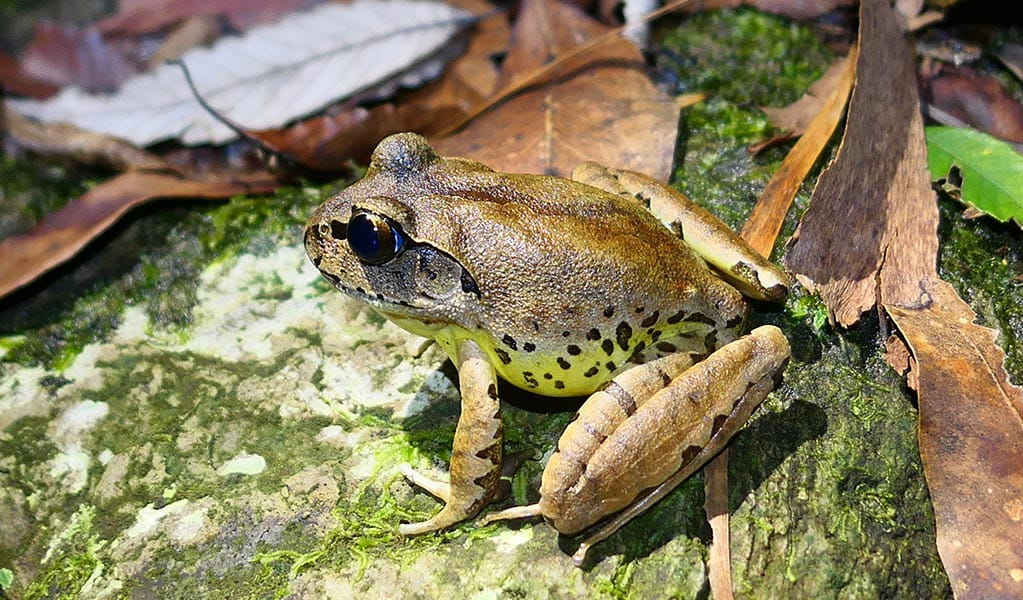
Fleay's barred frog (Mixophyes fleayi)
The Fleay’s barred frog is an endangered species restricted to rainforest stream habitats in north-east NSW and south-east Queensland.
-
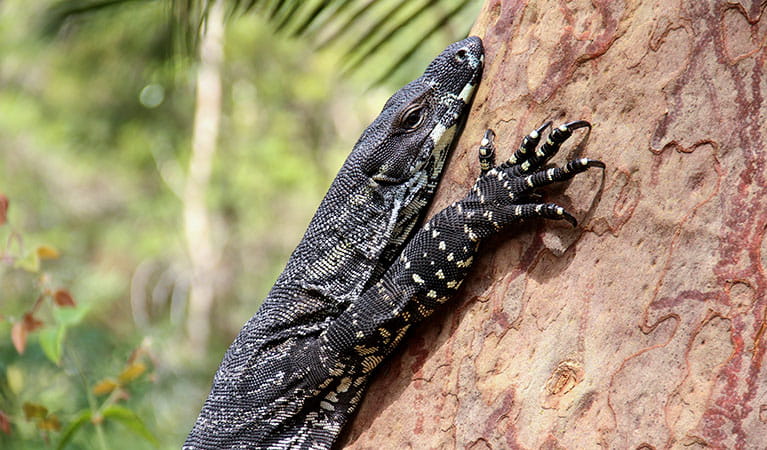
Lace monitor (Varanus varius)
One of Australia’s largest lizards, the carnivorous tree-dwelling lace monitor, or tree goanna, can grow to 2m in length and is found in forests and coastal tablelands across eastern Australia. These Australian animals are typically dark blue in colour with whitish spots or blotches.
-
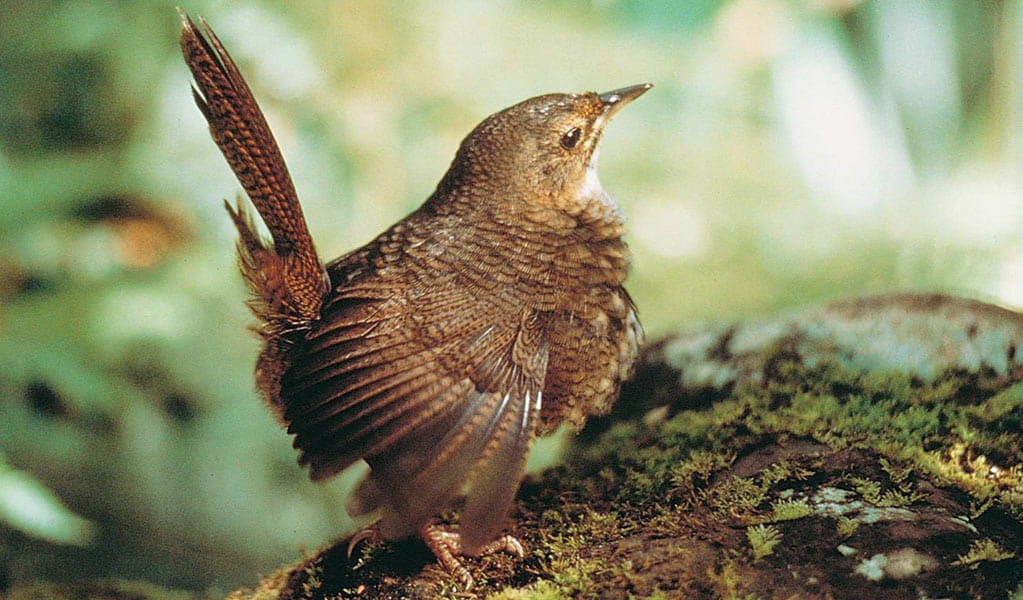
Rufous scrub-bird (Atrichornis rufescens)
The vulnerable rufous scrub-bird is a small, ground-foraging bird that lives only in isolated rainforest areas of south-eastern Australia.
-
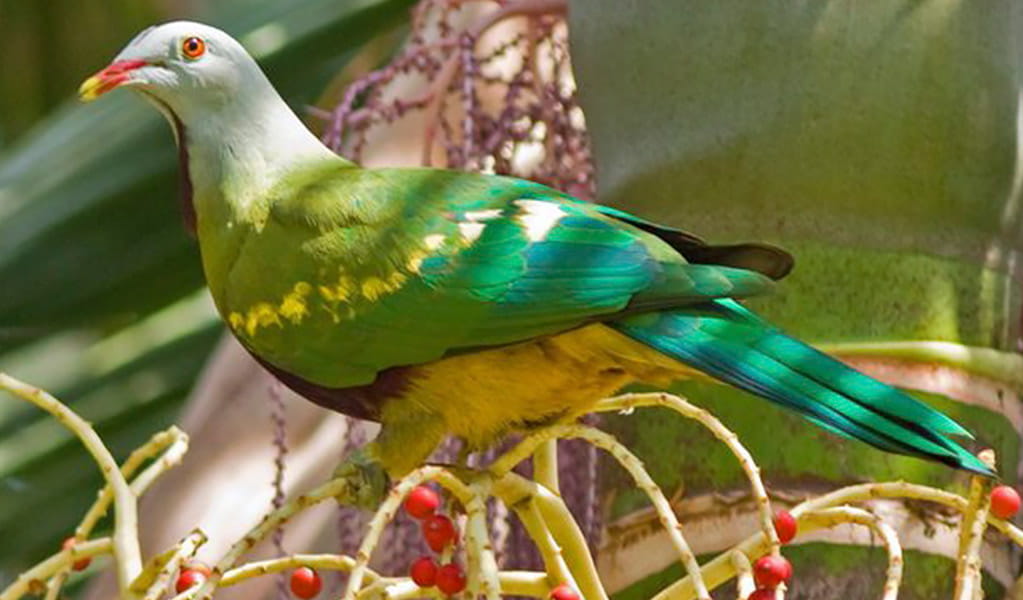
Wompoo fruit-dove (Ptilinopus magnificus)
The wompoo fruit-dove is a marvellously multi-coloured pigeon that makes its home in rainforest along coastal ranges from mid-north NSW to southern Queensland. It’s protected as a vulnerable species in NSW.
-
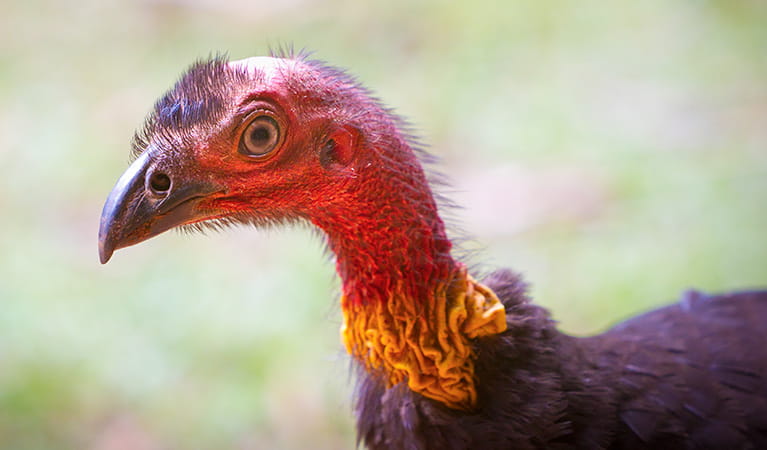
Australian brush turkey (Alectura lathami)
The Australian brush turkey, also known as bush or scrub turkey, can be found in rainforests along eastern NSW. With a striking red head, blue-black plumage and booming call, these distinctive Australian birds are easy to spot while bird watching in several NSW national parks.
Look out for...
Rufous scrub-bird
Atrichornis rufescens
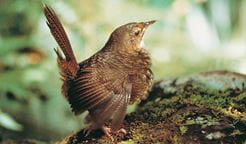
The vulnerable rufous scrub-bird is a small, ground-foraging bird that lives only in isolated rainforest areas of south-eastern Australia.